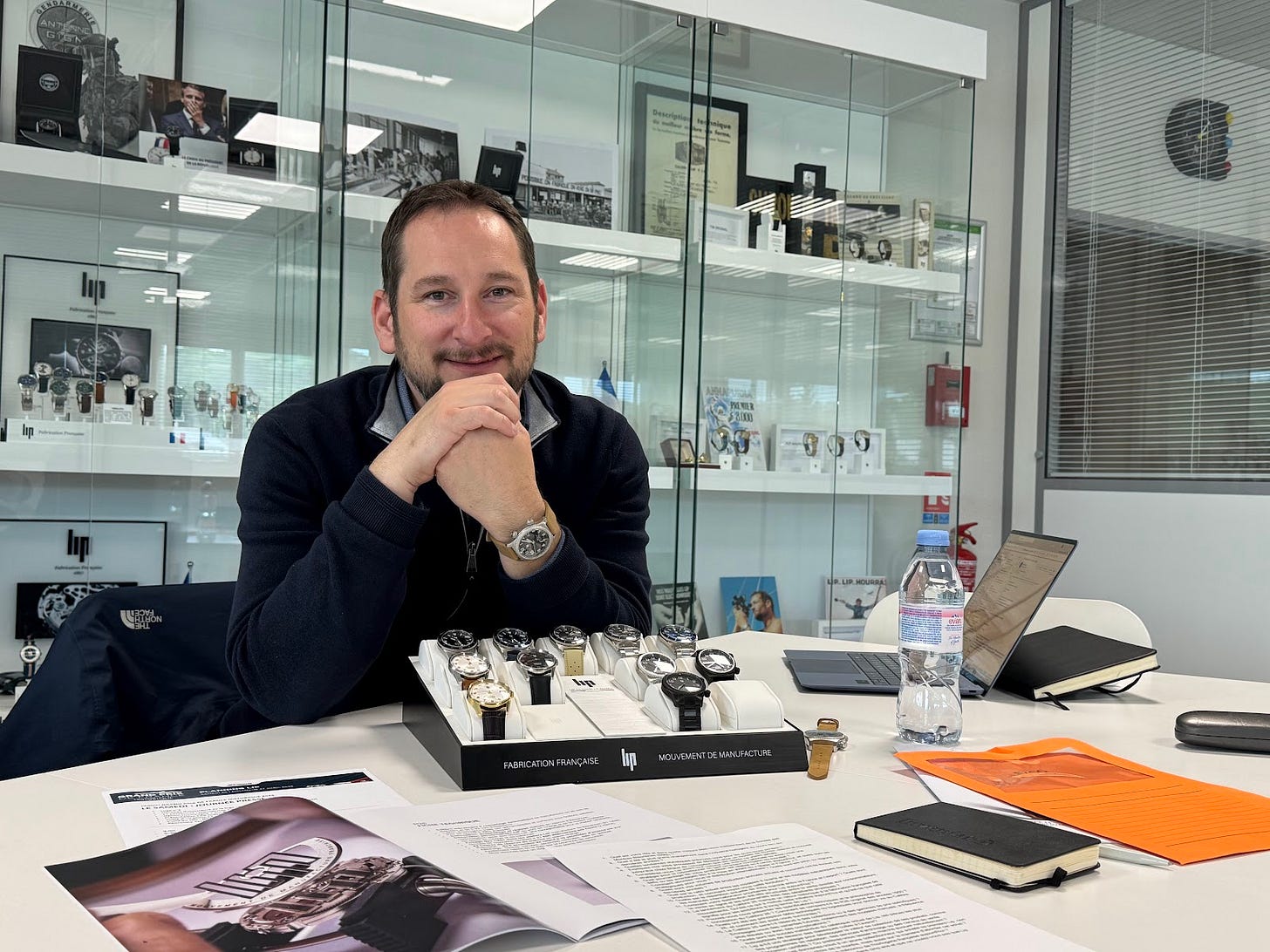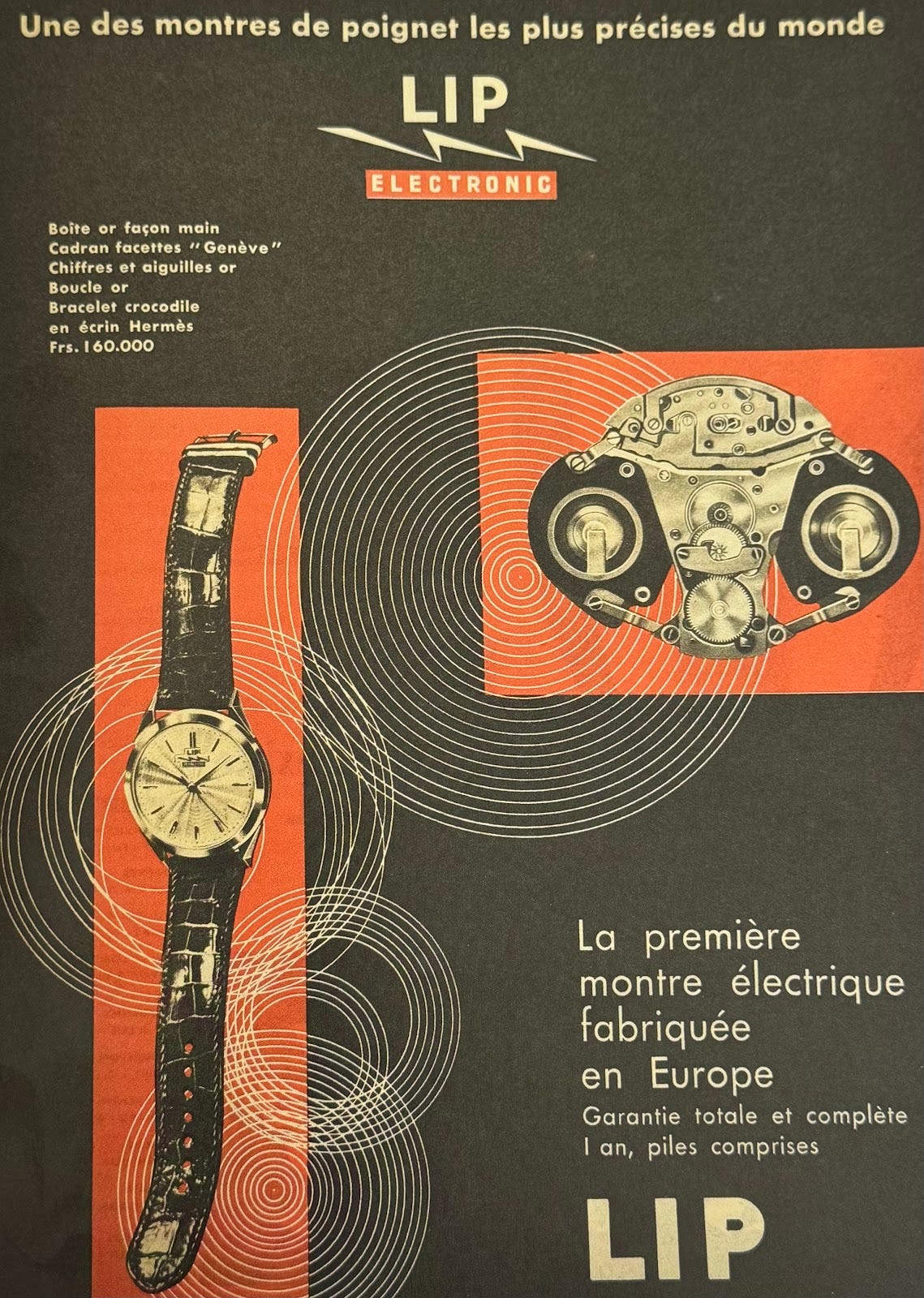
In 1952, as Europe emerged from the shadows of war into a new dawn of innovation, a visionary French watchmaker challenged the very heartbeat that had governed timepieces for centuries. The LIP company of Besançon—that ancient citadel of horological tradition where craftsmanship flowed through generations—unveiled the Electronique R27, a creation that would quietly transform our understanding of time's passage.
At the heart of this narrative lies a revealing insight: the LIP R27 reveals how technological revolutions actually unfold—not with dramatic severance between past and future, but through elegant hybrid creations that bridge worlds. For the discerning collector, the R27 represents something profound—a rare artifact suspended between eras, capturing that breathless moment when innovation first embraced tradition rather than displacing it.
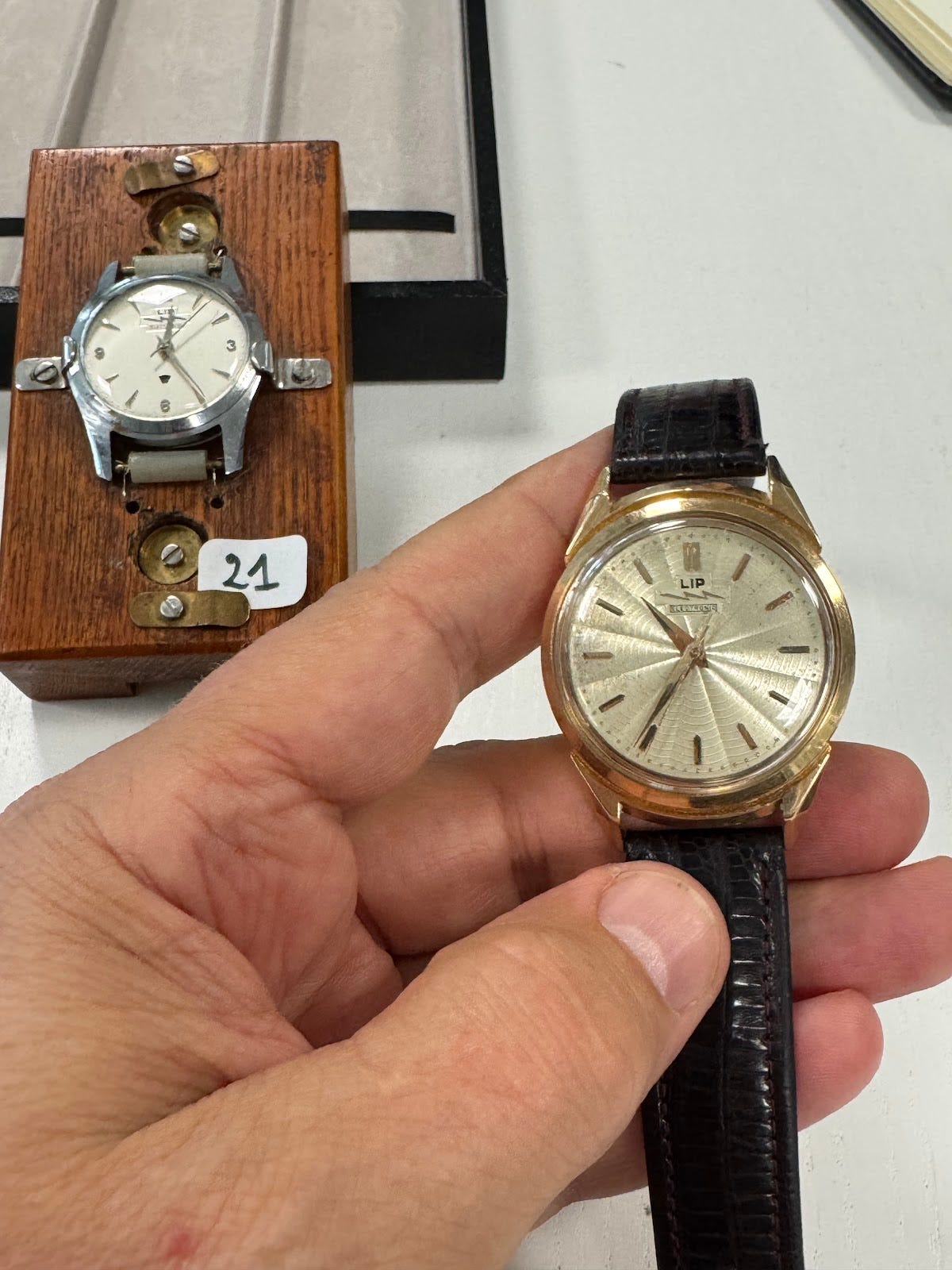
Beyond rarity, the R27 captures lightning in a case—that fleeting moment when watchmaking evolution paused between mechanical tradition and electronic future.
Founded in 1867 by Emmanuel Isaac Lipmann, LIP had established itself as a premier French watchmaker by the early 20th century—creating timepieces that spoke with a distinctly French voice in a conversation long dominated by Swiss precision. After World War II, Fred Lip—grandson of the founder—envisioned a future where watchmaking might transcend its mechanical boundaries and embrace the electronic age dawning across the horizon.
This vision created a beautiful tension between worlds. The R27 embodied this duality: revolutionary electronics housed within classical aesthetics, like modern poetry written on ancient parchment. Its design maintained the dignified elements of traditional timepieces—elegant dials flowing with silver guilloche patterns reminiscent of rippling water, model names drawn from celestial bodies—while concealing its electronic heart beneath.
When Charles de Gaulle wore the LIP Electronic upon his wrist, he transformed it from mere timepiece to cultural touchstone—a tangible emblem of French innovation during an era when nations sought to define themselves through technological achievement. LIP's pursuit of electronic watchmaking represented a carefully orchestrated vision in the competitive landscape of 1950s horology. With Swiss manufacturers maintaining their legacy of mechanical excellence, LIP formed a partnership with American company Elgin, creating a bridge across the Atlantic that would unite different approaches to innovation.
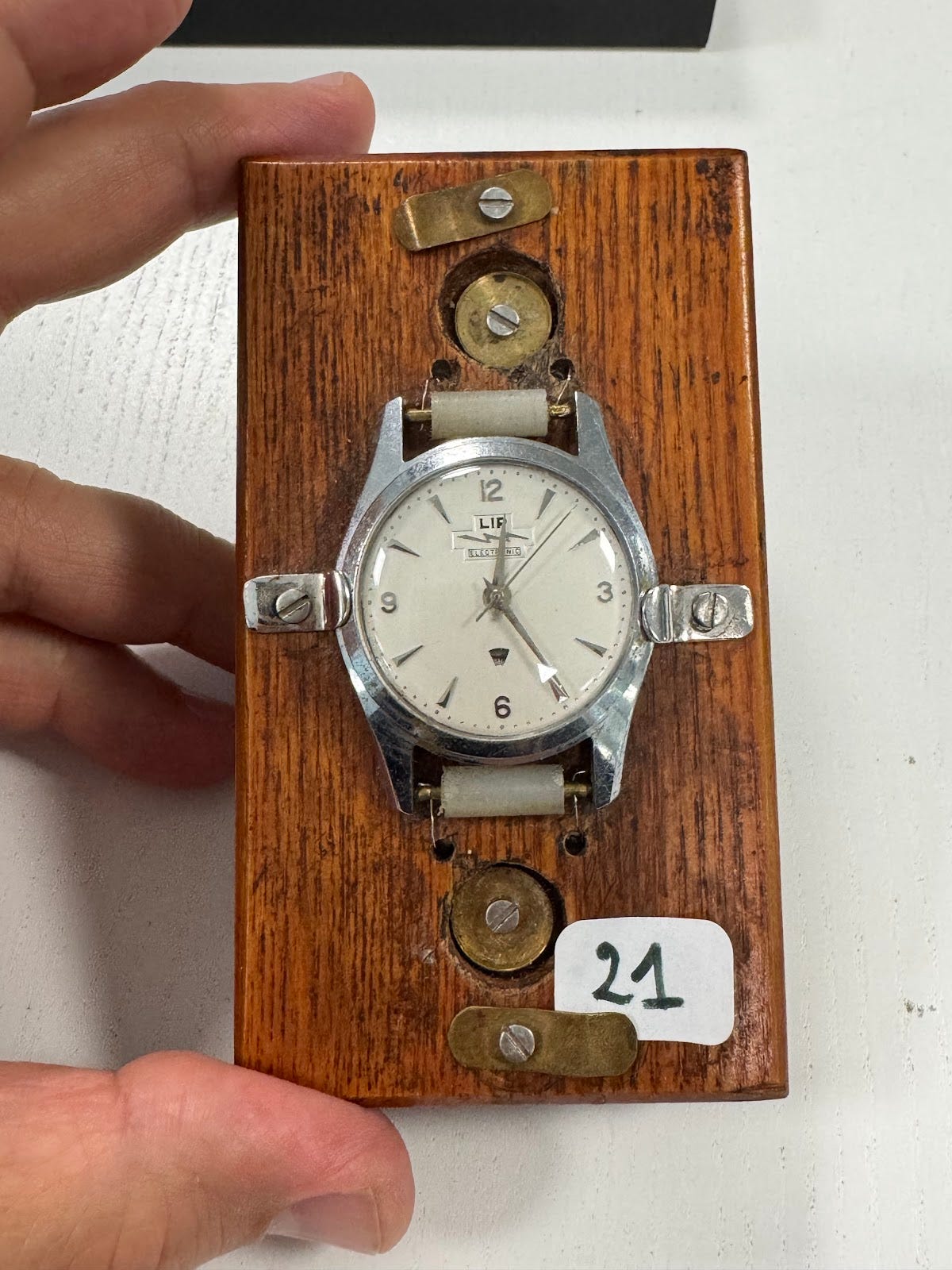
Development began under the guidance of engineers Jean-Georges Laviolette and Paul Dargier De Saint-Vaulry, with the latter filing an early patent in 1946, planting seeds of innovation while Europe still recovered from conflict. A pivotal moment arrived on March 19, 1952, with synchronized prototype unveilings in Chicago and Paris—a moment of revelation years before commercial possibility, demonstrating technological foresight that transcended immediate market demands.
"The LIP Electronic R27 was the world's first 'electronic' movement because it contained a tiny diode to reduce sparking on the contacts."
This diode provided crucial differentiation from Hamilton's competing Electric 500. Though Hamilton reached the marketplace first in 1957, LIP's incorporation of the diode created an "electronic" timepiece rather than merely an "electric" one—a subtle distinction that contained within it a profound technical achievement. For knowledgeable collectors, this engineering nuance represents the thoughtful innovation that elevates certain timepieces from mere objects to historical markers.
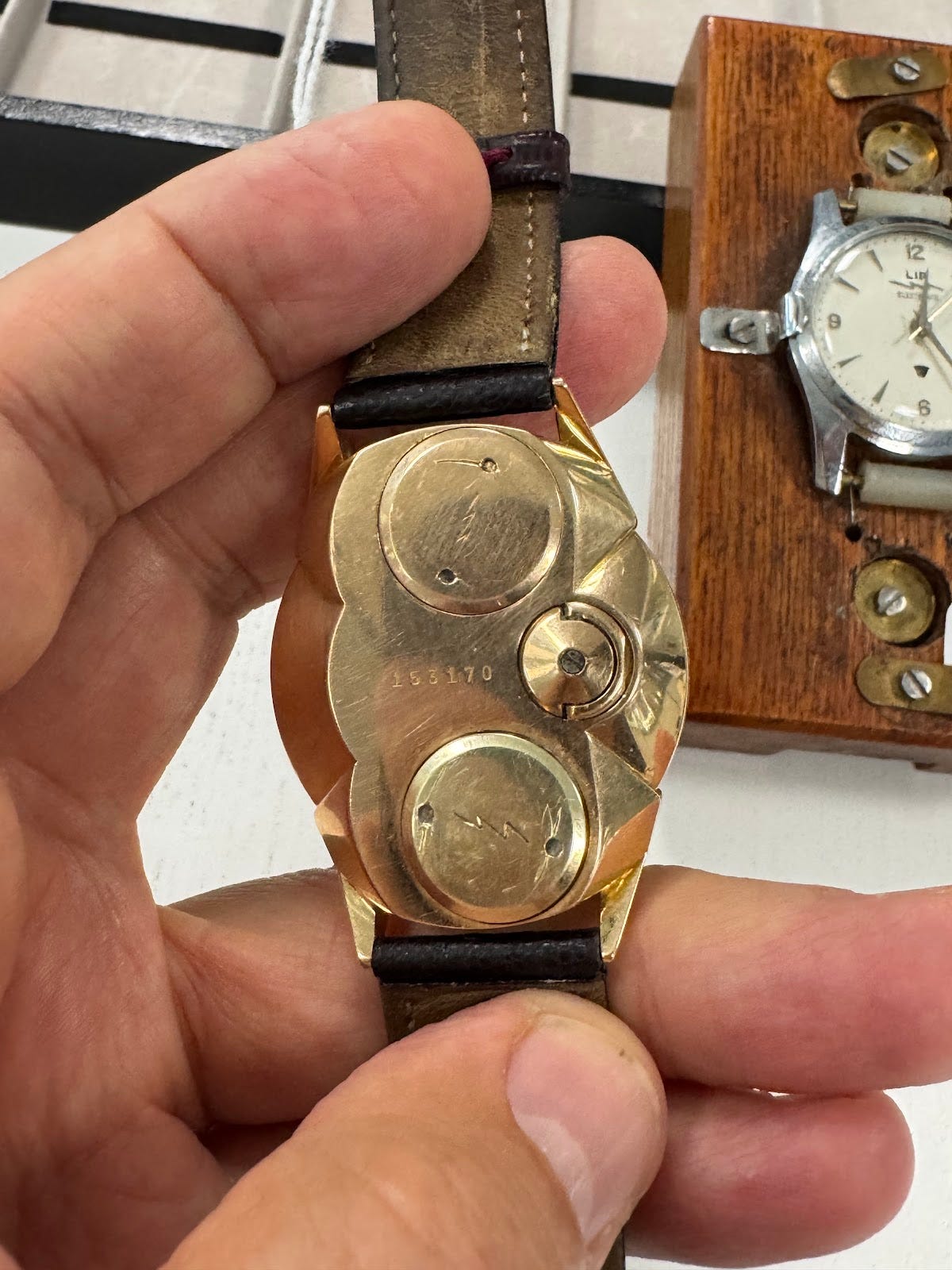
The R27's distinctive features reflected deep consideration of both technical requirements and aesthetic heritage. Its back-set crown system suggested a confidence in the watch's precision—that time adjustment would be an occasional rather than regular necessity. The dual-battery design prioritized reliable performance over conventional convenience. For collectors, these engineering choices represent the fascinating dialogue between aspiration and possibility that defines pivotal technological moments.
LIP's approach reflected distinctly French cultural sensibilities—an appreciation for both innovation and aesthetic refinement that has long characterized French contributions to technology and art. While Swiss manufacturers continued their methodical evolution of mechanical designs, LIP embraced electronic exploration with characteristic French willingness to reimagine boundaries.
The company's presentation of the first R27 watches to Charles de Gaulle and Dwight Eisenhower transformed a technical achievement into a cultural statement. These heads of state elevated the timepiece beyond consumer object to become a symbol of cross-Atlantic cooperation and innovation—a physical embodiment of shared vision during the transformative post-war era.
Production in both steel and gold cases demonstrated thoughtful consideration of how innovation might be received across different contexts. Steel models expressed modernity and practical elegance, while gold versions created a bridge between electronic advancement and luxury traditions. For modern collectors, this diversity offers compelling opportunities to engage with the R27's story through different material expressions, from the more accessible steel models to the increasingly elusive gold variants.
Despite its technical brilliance, commercial realities shaped the R27's journey. Production complexities, the dual-battery system's requirements, and size considerations limited production to approximately 7,000 units between 1958-1963. The subsequent R148 caliber introduced in 1962—with its refined single-battery design—closed the chapter on the pioneering R27, transforming it from current product to historical milestone.
Yet the R27's significance transcends production figures. It pioneered approaches later adopted throughout the industry; Bulova incorporated the back-setting crown in their groundbreaking Accutron watches. For LIP, the R27 established a corporate identity centered on thoughtful innovation that influenced their subsequent development and direction in the decades that followed.
Most profoundly, the R27 secured an enduring place in French industrial heritage. In France, it represents a moment when national ingenuity illuminated the global horological landscape with particular brilliance. Today, collectors seek surviving examples not merely as functional objects but as cultural artifacts that capture a pivotal moment when the centuries-old rhythm of mechanical timekeeping first harmonized with electronic possibility.
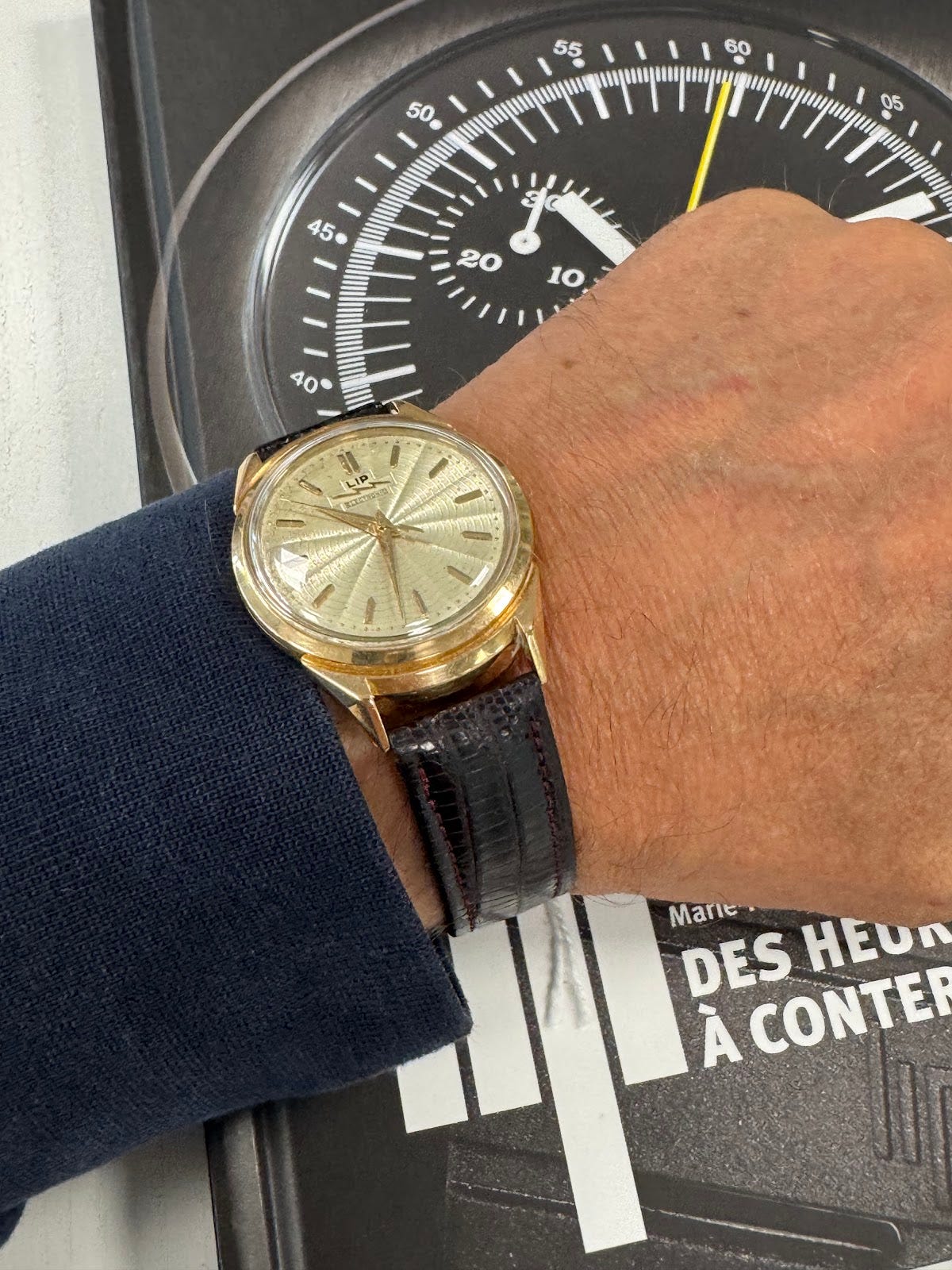
For the thoughtful watch collector, the R27 represents an exceptional opportunity for both intellectual and aesthetic engagement. With approximately 7,000 units produced across all variants—many now lost to time or awaiting restoration—surviving examples in original condition have become increasingly scarce, each one a preserved moment of horological transition.
The various model designations (Jupiter, Cosmic, Mercury) create a constellation of collecting possibilities, each with distinct dial executions that reflect different expressions of the same revolutionary concept. Provenance adds another dimension to the R27's collecting narrative. Examples with documented history—particularly those with connections to notable figures or accompanied by original materials—provide deeper connection to the timepiece's historical context.
From a preservation perspective, the R27 presents unique considerations. Original components have become increasingly difficult to source, and the sophisticated dual-battery system requires specialized knowledge to maintain. Collectors often seek examples with documented service history, recognizing that proper care ensures these historical artifacts continue their journey through time.
For the discerning collector, the R27 offers a profound connection to a pivotal moment in technological history—a tangible link to that brief, shimmering period when watchmaking first explored electronic horizons while maintaining its mechanical soul. The R27 stands as an elegant reminder that technological advancement finds its deepest meaning not merely through technical achievement but through harmonious integration with human values and cultural contexts—a lasting insight from a timepiece that bridged two technological worlds, and a compelling addition to any thoughtfully curated collection.
If you enjoyed this article, consider subscribing to receive more insights on independent watchmaking and horological culture.
About the Author
Sergio Galanti is a journalist specializing in independent watchmaking and mechanical horology.



